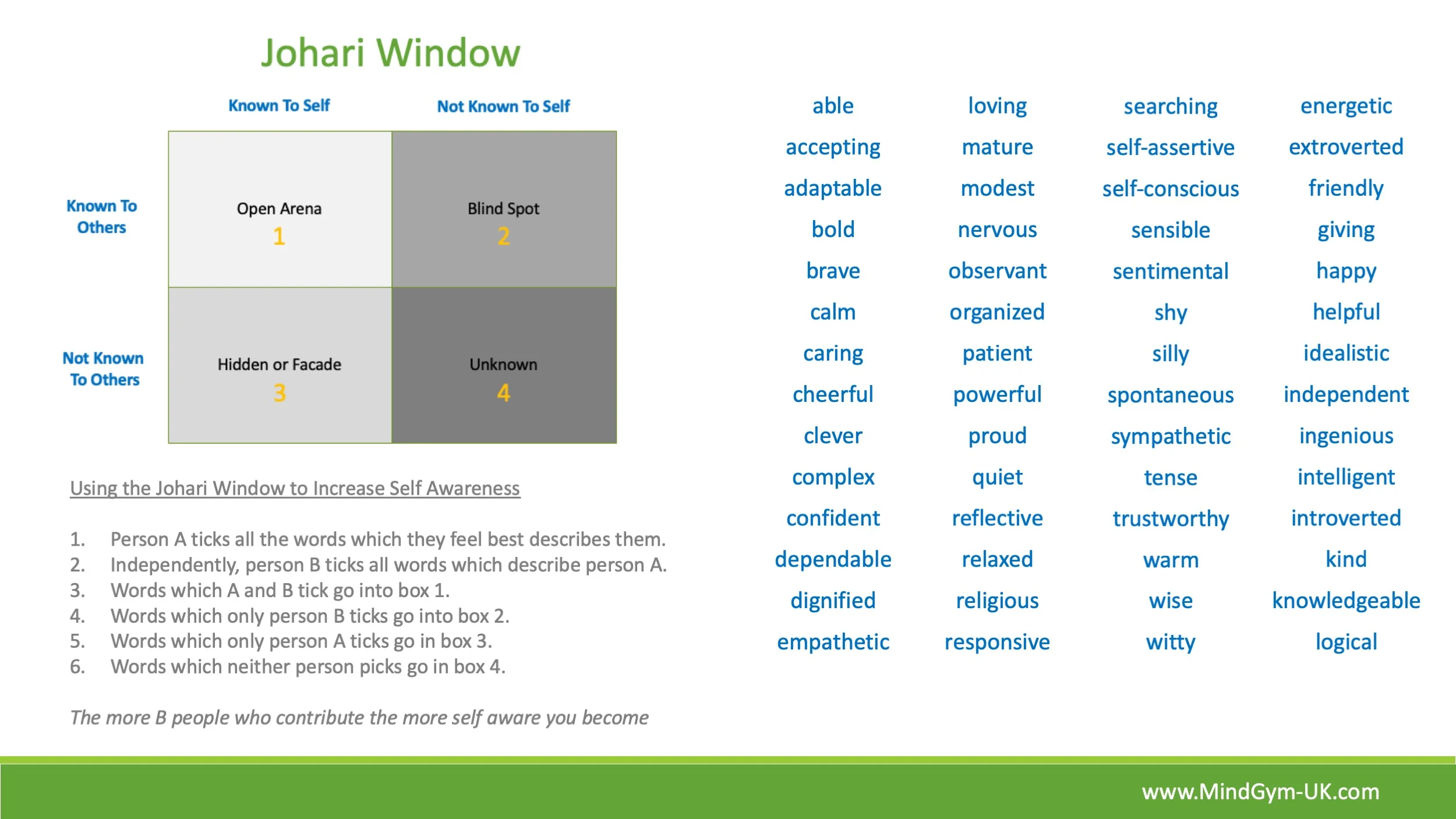The Johari Window: Finding our hidden strengths.
A famous, simple and powerful tool to give you a greater insight as to how you and others perceive you.
Great for personal development to highlight hidden strengths and unknown blind spots.
Also helpful for unearthing and pinpointing difficulties in relationships at home, work and in society.
Mind Gym. Johari Window
How to use
Assuming person A is the person seeking the insights.
Person A ticks all the words which they feel characterise themselves.
On a separate copy, person B ticks all the words which they feel characterise person A.
The results are then consolidated onto a third sheet as follows.
[there is no necessity for person B to see any of these results, and see * at the bottom of this page if two people plan to do this to each other]
All the words which person A and B have both ticked. Annotate these with Q1.
Annotate with Q2 to all words which person B has ticked, and which person A hasn’t.
Add Q3 to all words which person A has ticked and person B hasn’t ticked.
Add Q4 Add the words which neither person has ticked.
(If you’ve any words without annotation you’ve done it wrong!)
Each quadrant represents person A as follows:
Quadrant 1 is the words which both people have tagged, it’s your public persona. Known to self and others.
Quadrant 2 is for the words your colleague (or partner or boss) have picked but you haven’t. They see this, you don’t. Your blind spot.
Quadrant 3 is words you’ve picked but others haven’t, this is your secret you. Hidden from others. Your hidden strengths.
Quadrant 4 is the words with neither of you have picked. Words that don’t resonate with self or others.
A little self reflection thereafter will give you a much greater sense of self. But remember, it’s only relevant to the relationship between person A and B. To gain a wider perspective ask more people to be person B and ask them to tick the word lists, but don’t change yours. You are you.
So what next then?
Adopt and accept the words in quadrant 2. This is a really important first step.
Next, ask yourself how and why you are hiding those characteristics in quadrant 3.
Finally, consider if there is anything in quadrant 4 which you’d like to become, and adapt into your behaviour accordingly.
* if you intend two people to do this together with your partner for example do all the ticking (of self and other person) before you start annotating your lists with the Q’s.
To read more about our behaviour, neurology, psychology check my blog here.
Paul Roebuck
Behavioural Psychotherapist
PGCEE, FETC (A.Dip).
paulsroebuck@gmail.com
+44 7838 371155



